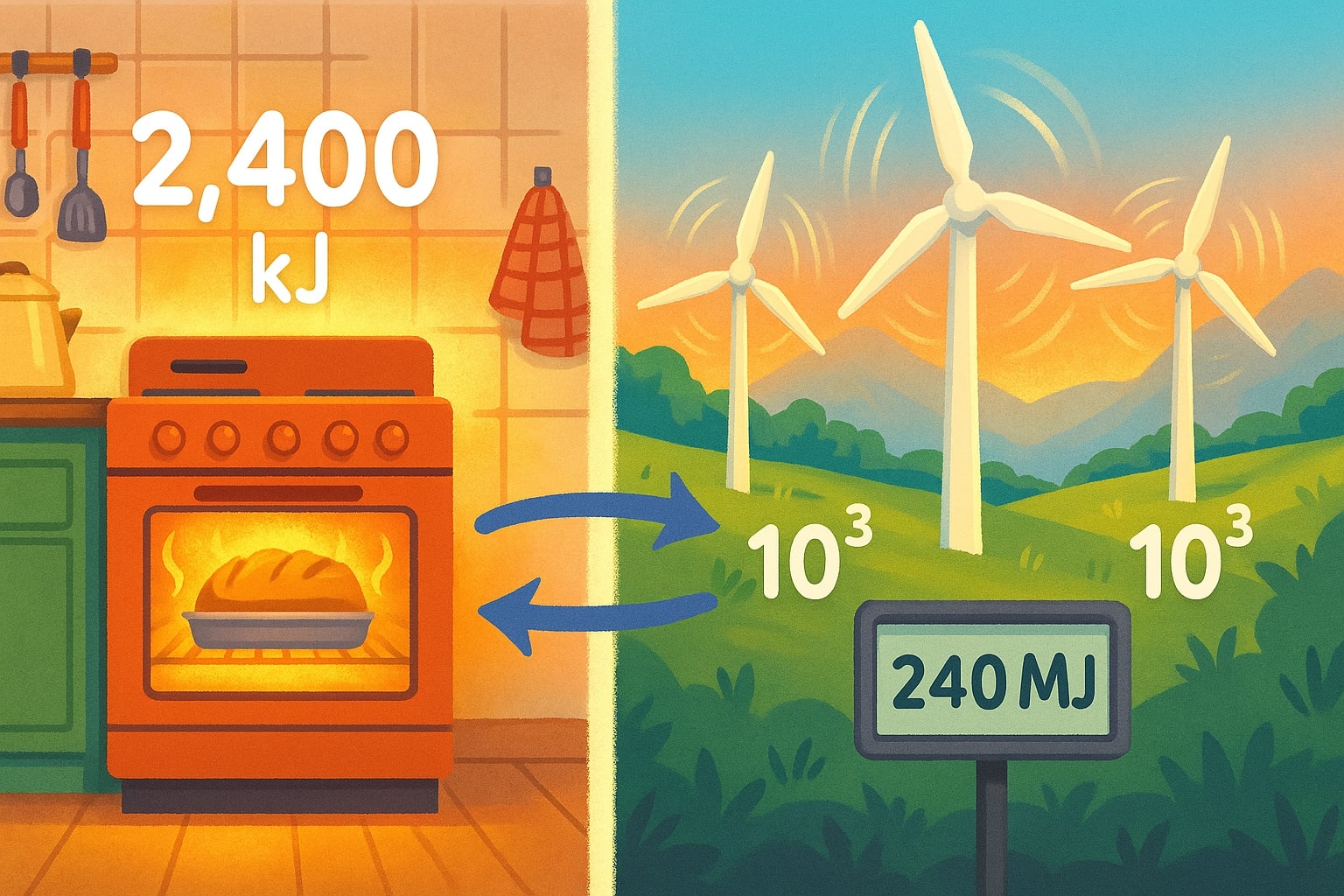kilojoule to megajoule – How to convert kJ to MJ
The conversion from kilojoule to megajoule is a simple scale shift in the SI system — one megajoule equals 1 000 kilojoules. This makes it easy to switch between medium and large energy values, whether you’re working in engineering, energy reporting, or environmental science.
What is a kilojoule?
A kilojoule (kJ) equals 1 000 joules. It’s a convenient unit for everyday and mid-range energy measurements — from nutrition data to appliance ratings to smaller industrial processes.
Formula:
1 kJ = 1 000 J
Many countries use kJ as the standard energy measure on packaging and consumer-facing documents.
What is a megajoule?
A megajoule (MJ) equals 1 000 000 joules or 1 000 kilojoules. It’s suited to expressing larger amounts of energy, such as electricity generation, fuel content, or large-scale energy storage.
Formula:
1 MJ = 1 000 kJ

How to convert kilojoule to megajoule
Since both are SI units, the formula is straightforward:
Energy (MJ) = Energy (kJ) ÷ 1 000
Example:
If you have 8 500 kJ, then
Energy = 8 500 ÷ 1 000 = 8.5 MJ
For the reverse conversion:
Energy (kJ) = Energy (MJ) × 1 000
You can calculate it in just a few seconds with our Energy Converter, and if you’re curious about converting other measurements — from energy to length, area, and more — explore the complete set of tools in our Conversion Tools library.
Do you know?
-
Kilojoule fact: A cup of cooked rice contains roughly 600 kJ of chemical energy — enough to run a 100-watt bulb for about 100 minutes.
-
Megajoule fact: One litre of petrol contains around 34 MJ of energy, making MJ a standard figure in fuel economy ratings.
Kilojoule fact: The average adult daily energy intake recommendation in Australia is about 8 700 kJ. -
Megajoule fact: Large solar farms measure daily output in MJ to keep reporting simple, even when totals run into the millions of joules.
From Kitchen Appliances to Renewable Energy
At home, the energy use of your oven might be shown in kilojoules, making it easier to compare with other appliances. For example, an oven might use 2 400 kJ during an hour of baking.
However, when energy managers track usage across an entire housing complex or a factory, the numbers quickly add up. Instead of writing 240 000 kJ, they switch to 240 MJ — easier to read and faster to communicate.
The same principle applies to renewable energy. A small wind turbine might produce 12 000 kJ of power on a breezy afternoon, but a wind farm operating dozens of turbines will express daily totals in MJ for simplicity. In both cases, the energy is identical — only the scale changes.
This ability to adjust the unit to fit the audience ensures that reports are clear and decisions can be made without getting lost in long numbers.

Scaling for Clarity
The kilojoule to megajoule conversion may be simple, but it’s a practical example of how scaling keeps energy data clear. Kilojoules are perfect for moderate, everyday amounts, while megajoules give you a big-picture view for projects, industry, and large-scale analysis.
By knowing both, you can switch effortlessly between personal, professional, and industrial contexts — making your energy data as readable as it is accurate.

